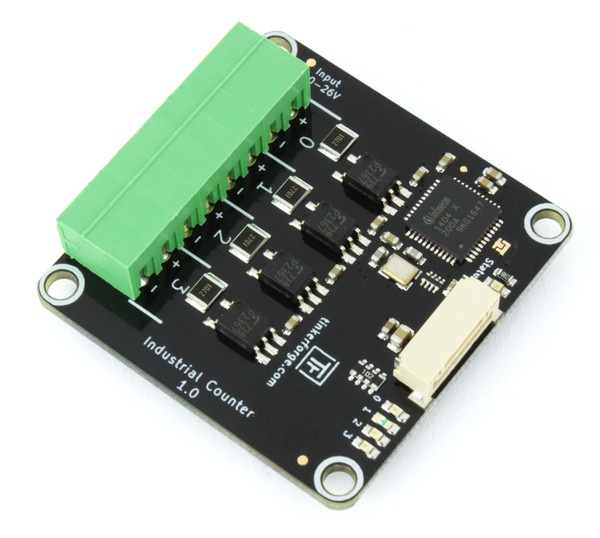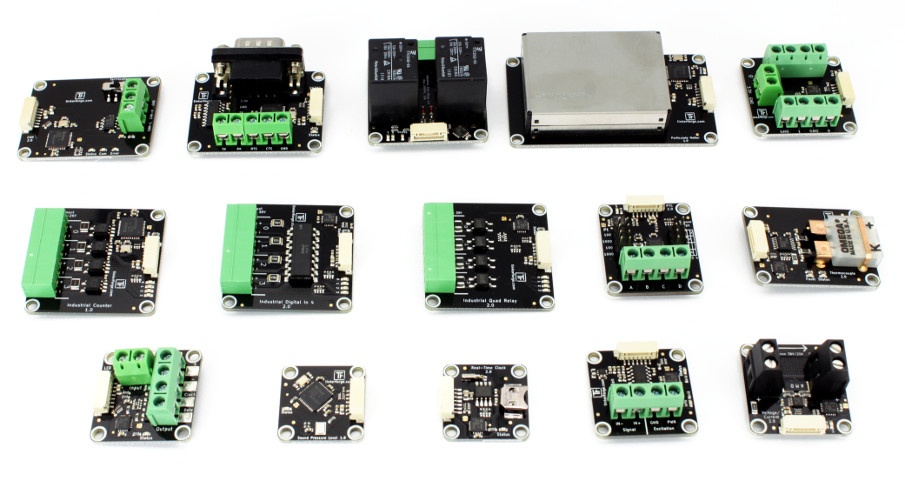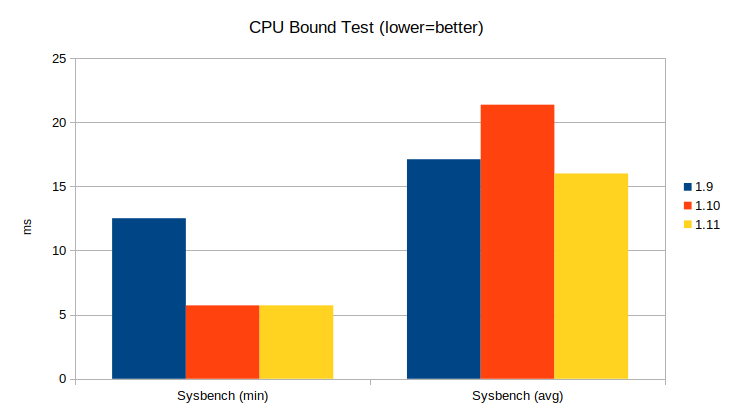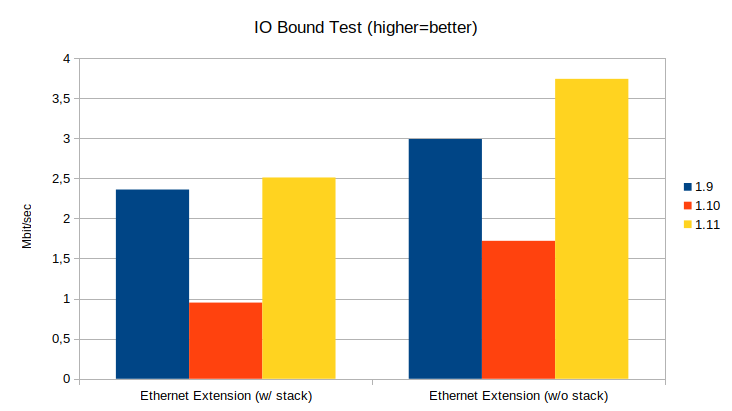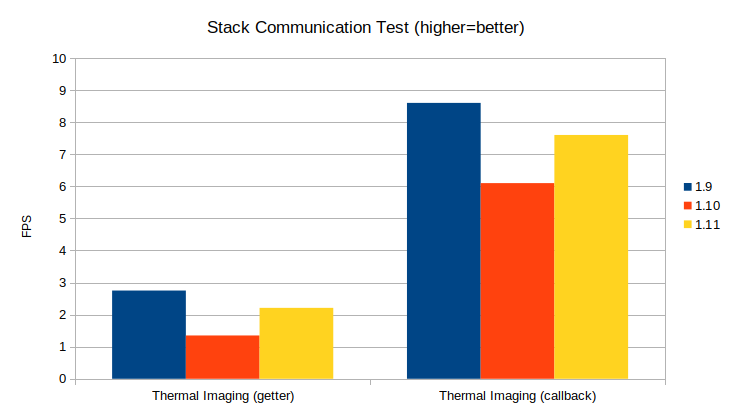In the last blog entry we already introduced some of our new Bricklets. These new Bricklets were new version replacements for pre-existing Bricklets. Today we want to introduce four brand-new Bricklets: The Industrial Dual Relay Bricklet, Sound Pressure Level Bricklet, Industrial Counter Bricklet as well as the Particulate Matter Bricklet are now available in our shop and documentation.
Industrial Dual Relay Bricklet: With the Industrial Dual Relay Bricklet our product line is extended by a new Industrial Bricklet. It replaces the old Dual Relay Bricklet. The Industrial Dual Relay Bricklet has two relays with three terminals each (single-pole double-throw). It can switch loads up 240VAC/10A as well as 30VDC/7A. In comparission to the predecessor the Bricklet now has the pluggable terminal block that all of the Industrial Bricklets have. Since the Bricklet is often used together with other Industrial Bricklets, this gives better compatibility. A Dual Relay Bricklet in the "industrial form factor" was one of the most common feature requests that we got!
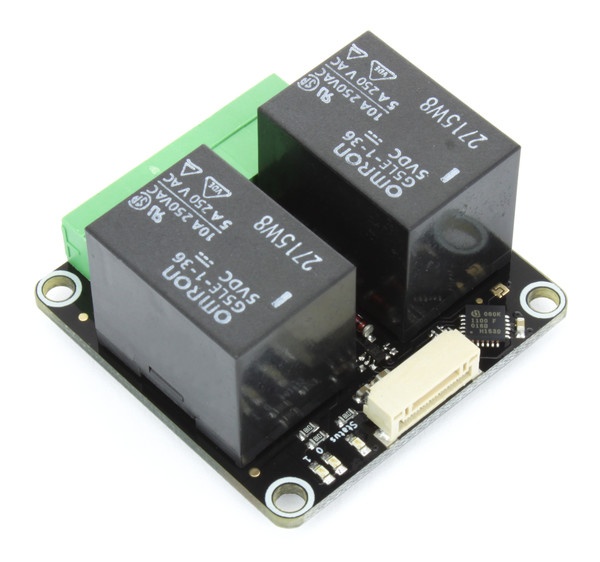
Sound Pressure Level Bricklet: The Sound Intensity Bricklet is replaced by the Sound Pressure Level Bricklet. The Sound Pressure Level Bricklet can measure sound pressure level in dB(A/B/C/D/Z) and ITU-R 468. It iuses a frequency range of 40Hz to 40960Hz and it can measure sound level from 30dB to 120dB. Additionally the Sound Pressure Level Bricklet can measure the spectrum. The specification is comparable to a 200€ sound level meter.
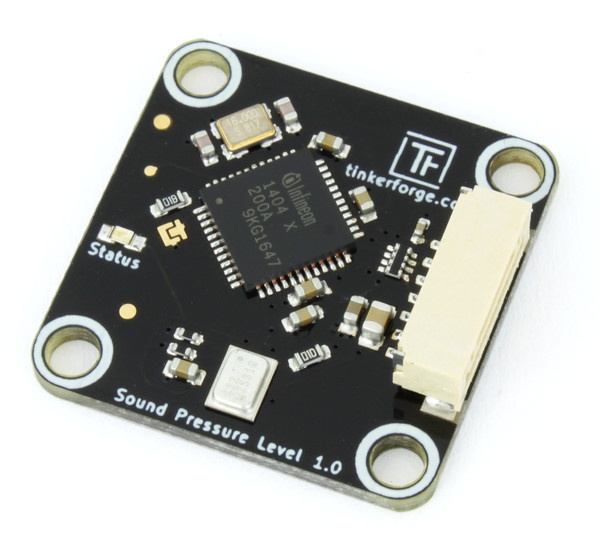
Particulate Matter Bricklet: Many of our customers tried to measure particulates with the Dust Detector Bricklet, but it was not meant to be used for this application. With the Particulate Matter Bricklet we now have a Bricklet that can measure actual particulate matter concentration in the categories PM1.0, PM2.0 and PM10 as well as the number of particles in 100ml of air with the sizes between 0.3µm up to 10µm.
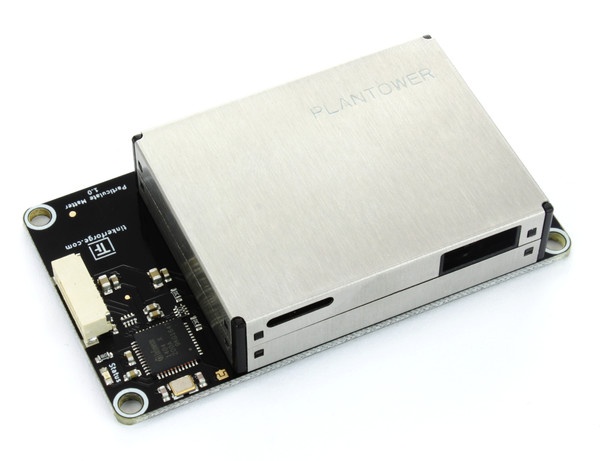 Industrial Counter Bricklet: The Industrial Counter Bricklet is a frequency counter with 4 galvanically isolated channels. With the integrated edge counter you can measure duty cycle, period and frequencies from 0.03Hz up to 4MHz per channel. Since the direction of the counter is configurable and the Bricklet has a time resolution of up to 10.4ns, it can be used to read any sensors that have any kind of edge count or frequency output.
Industrial Counter Bricklet: The Industrial Counter Bricklet is a frequency counter with 4 galvanically isolated channels. With the integrated edge counter you can measure duty cycle, period and frequencies from 0.03Hz up to 4MHz per channel. Since the direction of the counter is configurable and the Bricklet has a time resolution of up to 10.4ns, it can be used to read any sensors that have any kind of edge count or frequency output.
